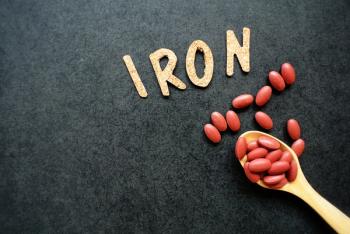
Twice-weekly prenatal iron as effective as daily regimen
An international study published in PLOS Medicine shows no benefit in birthweight or infant growth for daily versus twice-weekly prenatal iron supplementation. Conducted by Australian researchers in Viet Nam, the results support intermittent rather than daily iron administration for pregnant populations with low rates of iron deficiency.
An international study published in
More than 1200 women with gestations less than 16 weeks, representing 104 communes in a semirural region of Viet Nam, were included in the cluster randomized controlled trial. They were randomized to daily supplementation with iron-folic acid (n=426) twice-weekly iron-folic acid supplementation (n=425), or twice-weekly iron-folic acid supplementation plus micronutrients (n=407 women).
Assessments for hemoglobin and iron indices were done at enrollment, 32 weeks’ gestation, and 6 months postpartum. At enrollment and 32 weeks’ gestation, serum folate, vitamin B12 and 25(OH) vitamin D, and urinary iodine concentrations were measured. Infants were assessed at birth and at age 6 months.
At 32 weeks’ gestation, maternal ferritin was lower in mothers receiving twice-weekly iron-folic acid than in the group receiving daily supplementation (geometric mean ratio, 0.73; 95% CI 0.67 to 0.80) and in women receiving twice-weekly multiple micronutrient supplementation compared with daily administration (geometric mean ratio 0.62; 95% CI 0.57 to 0.68), but hemoglobin levels were no different.
Mean birthweight was 3148 g and did not differ in infants born to women who received twice-weekly iron-folic acid versus daily supplementation (mean difference 28 g; 95% CI 22 to 78) or twice-weekly micronutrient supplementation versus supplementation (mean difference 36.8 g; 95% CI 82 to 8.2). At age 6 months, cognitive scores were higher in infants of mothers who received twice-weekly iron-folic acid than in those whose mothers received daily iron-folic acid (mean difference 1.89; 95% CI 0.23 to 3.56).
Adherence rates, the authors found, were significantly higher in the twice-weekly iron-folic acid group than in the group receiving daily supplementation. “Our finding of a significant improvement in infant cognitive outcome at 6 months of age following twice weekly antenatal [iron-folic acid supplementation],” the researchers said, “requires further exploration and provides additional support for the use of intermittent over daily antenatal [iron-folic acid supplementation] regimes in populations with low rates of iron deficiency.”
Newsletter
Get the latest clinical updates, case studies, and expert commentary in obstetric and gynecologic care. Sign up now to stay informed.









